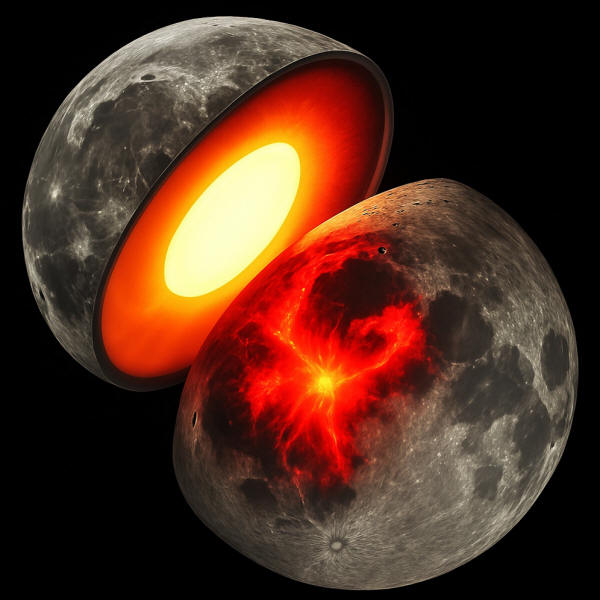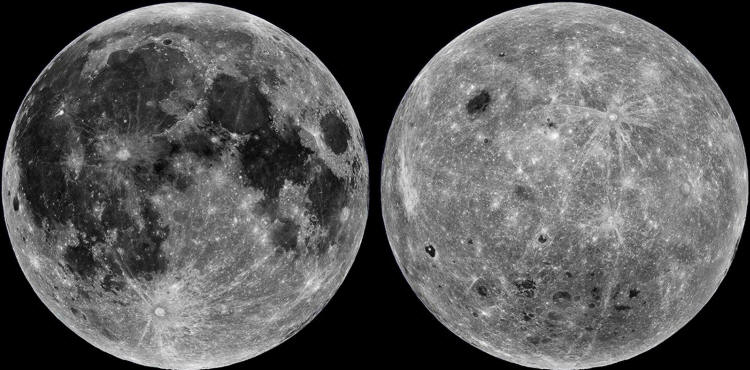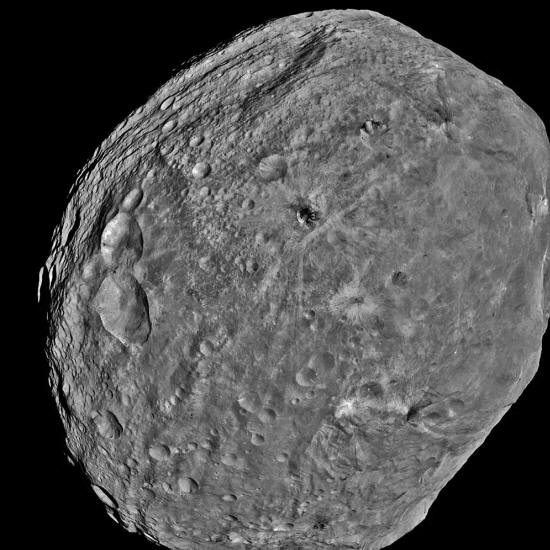|
by Anthony Greicius from NASA Website Information sent by JHGP
the Moon's hot interior and volcanism about 2 to 3 billion years ago. It is thought that volcanic activity on the lunar near side (the side facing Earth) helped create a landscape dominated by vast plains called mare,
which are
formed by molten rock that cooled and solidified.
Analyzing gravity data collected by spacecraft
orbiting other worlds reveals groundbreaking insights about
planetary structures without having to land on the surface.
These fluctuations cause the Moon to flex
slightly due to Earth's tidal force - a process called tidal
deformation - which provides critical insights into the Moon's
deep internal structure.
They accomplished this by analyzing data on the
motion of NASA's
GRAIL (Gravity Recovery and
Interior Laboratory) mission, whose spacecraft, Ebb and Flow,
orbited the Moon from Dec. 31, 2011, to Dec. 17, 2012.
were put together from observations made
by NASA's Lunar
Reconnaissance Orbiter.
Using NASA's
Deep Space Network radiometric data
and imaging data from the agency's
Dawn spacecraft, which orbited
the asteroid from July 16, 2011, to Sept. 5, 2012, they found that
instead of having distinct layers as expected, Vesta's internal
structure may be mostly uniform, with a very small iron core or no
core at all.
The team used NASA supercomputers to build a detailed map of how gravity varies across each body.
From that, they could better understand what the Moon and Vesta are made of and how planetary bodies across the solar system formed.
While the near side is dominated by vast plains -
known as mare - formed by molten rock that cooled and
solidified billions of years ago, the far side is more rugged, with
few plains.
NASA's Dawn mission obtained this image of the giant asteroid Vesta on July 24, 2011. The spacecraft spent 14 months orbiting the asteroid, capturing more than 30,000 images
and fully mapping its
surface.
That process would have caused radioactive, heat-generating elements to accumulate deep inside the near side's mantle, and the new study offers the strongest evidence yet that this is likely the case.
When comparing their results with other models, Park's team found a small but greater-than-expected difference in how much the two hemispheres deform.
The most likely explanation is that the near side has a warm mantle region, indicating the presence of heat-generating radioactive elements, which is evidence for volcanic activity that shaped the Moon's near side 2 billion to 3 billion years ago.
Changes in inertia can be seen when an ice skater spins with their arms held outward.
As they pull their arms in, bringing more mass toward their center of gravity, their inertia decreases and their spin speeds up.
By measuring Vesta's inertia, scientists can gain a detailed understanding of the distribution of mass inside the asteroid:
Some theories suggest that over a long period, Vesta gradually formed onion-like layers and a dense core.
But the new inertia measurement from Park's team
suggests instead that Vesta is far more homogeneous, with its mass
distributed evenly throughout and only a small core of dense
material, or no core.
While Vesta has long been considered a
differentiated asteroid, a more homogenous structure would suggest
that it may not have fully formed layers or may have formed from the
debris of another planetary body after a massive impact.
By measuring how Io's gravity changes as it orbits Jupiter, which exerts a powerful tidal force, they revealed that the fiery moon is unlikely to possess a global magma ocean.
|




